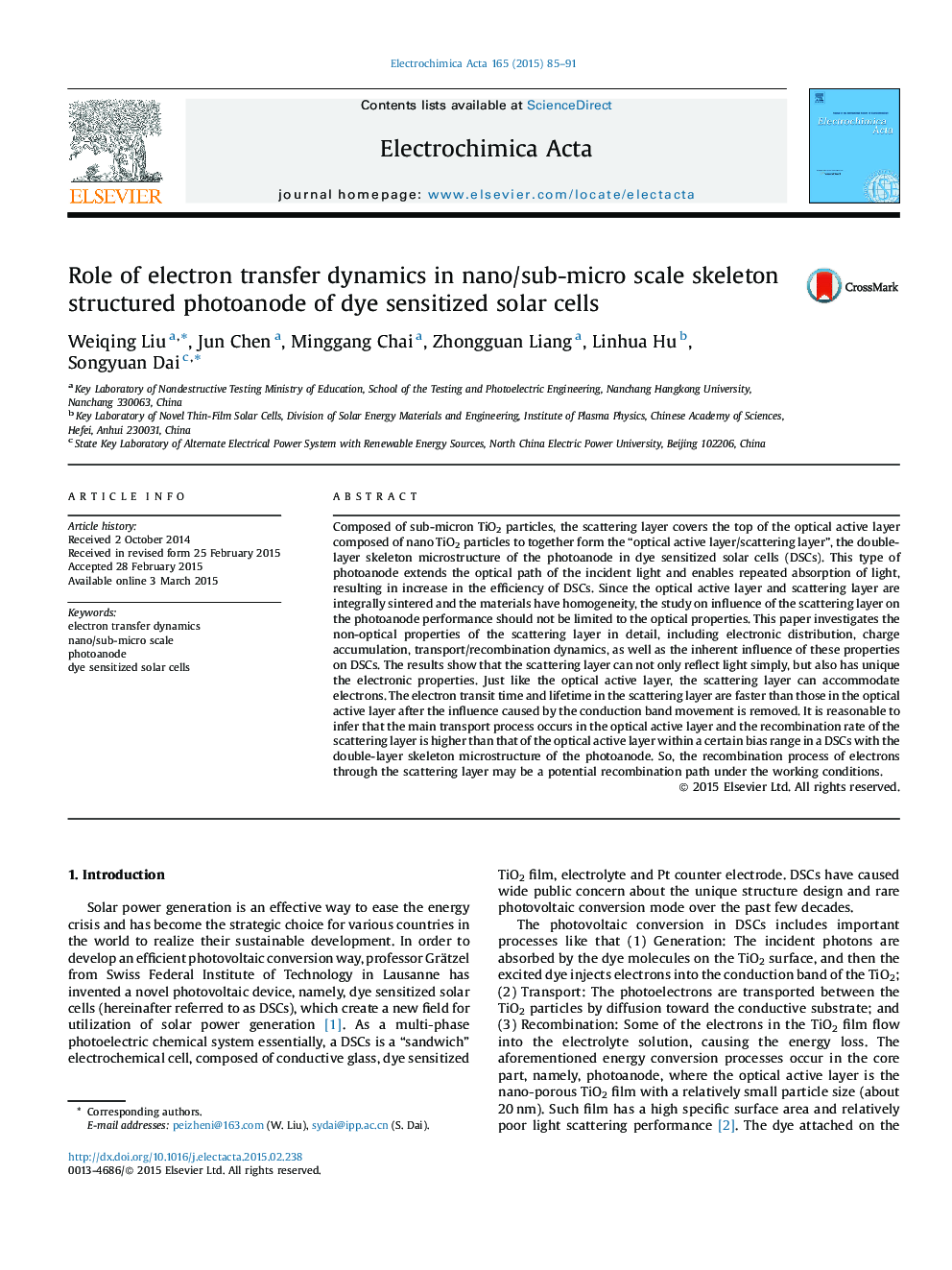| Article ID | Journal | Published Year | Pages | File Type |
|---|---|---|---|---|
| 6611701 | Electrochimica Acta | 2015 | 7 Pages |
Abstract
Composed of sub-micron TiO2 particles, the scattering layer covers the top of the optical active layer composed of nano TiO2 particles to together form the “optical active layer/scattering layer”, the double-layer skeleton microstructure of the photoanode in dye sensitized solar cells (DSCs). This type of photoanode extends the optical path of the incident light and enables repeated absorption of light, resulting in increase in the efficiency of DSCs. Since the optical active layer and scattering layer are integrally sintered and the materials have homogeneity, the study on influence of the scattering layer on the photoanode performance should not be limited to the optical properties. This paper investigates the non-optical properties of the scattering layer in detail, including electronic distribution, charge accumulation, transport/recombination dynamics, as well as the inherent influence of these properties on DSCs. The results show that the scattering layer can not only reflect light simply, but also has unique the electronic properties. Just like the optical active layer, the scattering layer can accommodate electrons. The electron transit time and lifetime in the scattering layer are faster than those in the optical active layer after the influence caused by the conduction band movement is removed. It is reasonable to infer that the main transport process occurs in the optical active layer and the recombination rate of the scattering layer is higher than that of the optical active layer within a certain bias range in a DSCs with the double-layer skeleton microstructure of the photoanode. So, the recombination process of electrons through the scattering layer may be a potential recombination path under the working conditions.
Related Topics
Physical Sciences and Engineering
Chemical Engineering
Chemical Engineering (General)
Authors
Weiqing Liu, Jun Chen, Minggang Chai, Zhongguan Liang, Linhua Hu, Songyuan Dai,
